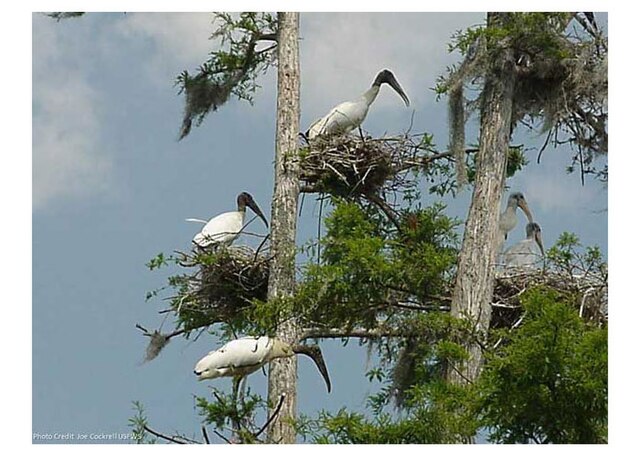Have you heard? The Wood Stork finally flew off the endangered species list! They have been perched on the list for a very long time. Usually, endangered species either grow in popularity or go down to zero after some time. 40 years ago they officially made the endangered species list, but now they have been taken off.
Wood storks look so fascinating, the color of their feathers just looks astonishing! They can reach up to 3.5 ft tall. Wood Storks are tropical birds so usually they are seen around tropical areas like Florida, Georgia, Mexico, Argentina, etc. They live for about 22 years, pretty long for a wild bird. They have a naked gray to black head and neck, white body, and edged black wings. Around the 1980s many wood storks were dying due to the loss of suitable feeding habitats, there were less than 5000 of them left worldwide. The U.S. Fish and Wildlife Service listed Wood Storks as endangered and took many precautions to protect them. The population kept dropping and dropping, 5% every single year. The population of wood storks was little to none, they were becoming extinct.
For the past 40 years, The U.S. Fish and Wildlife Service has been trying to get the population of the Wood Storks back up, but it was very difficult. They finally got an idea on how to save the Wood Storks. They moved Wood Storks to areas where they could find habitats and better feeding areas, they were spread out a lot. As they were getting used to the habitat and getting better, they started breeding more and more which once again caused the population to increase. The population went from lower than 5,000 to more than 250,000 in just 40 years! The Wood Storks have spread out like crazy, they are found in many areas that they were not in before.
Overall, Wood Storks have been patient and cooperative during the entire process. In just 40 years they grew their population 50 times than it was when they were listed endangered. One of the shortest periods in an animal’s population grew so much after almost getting extinct!














